How to overwinter tender bulbs – and keep them safe from freezing temperatures
Discover how to store tender flower bulbs correctly through the winter for glorious blooms to enjoy the following year
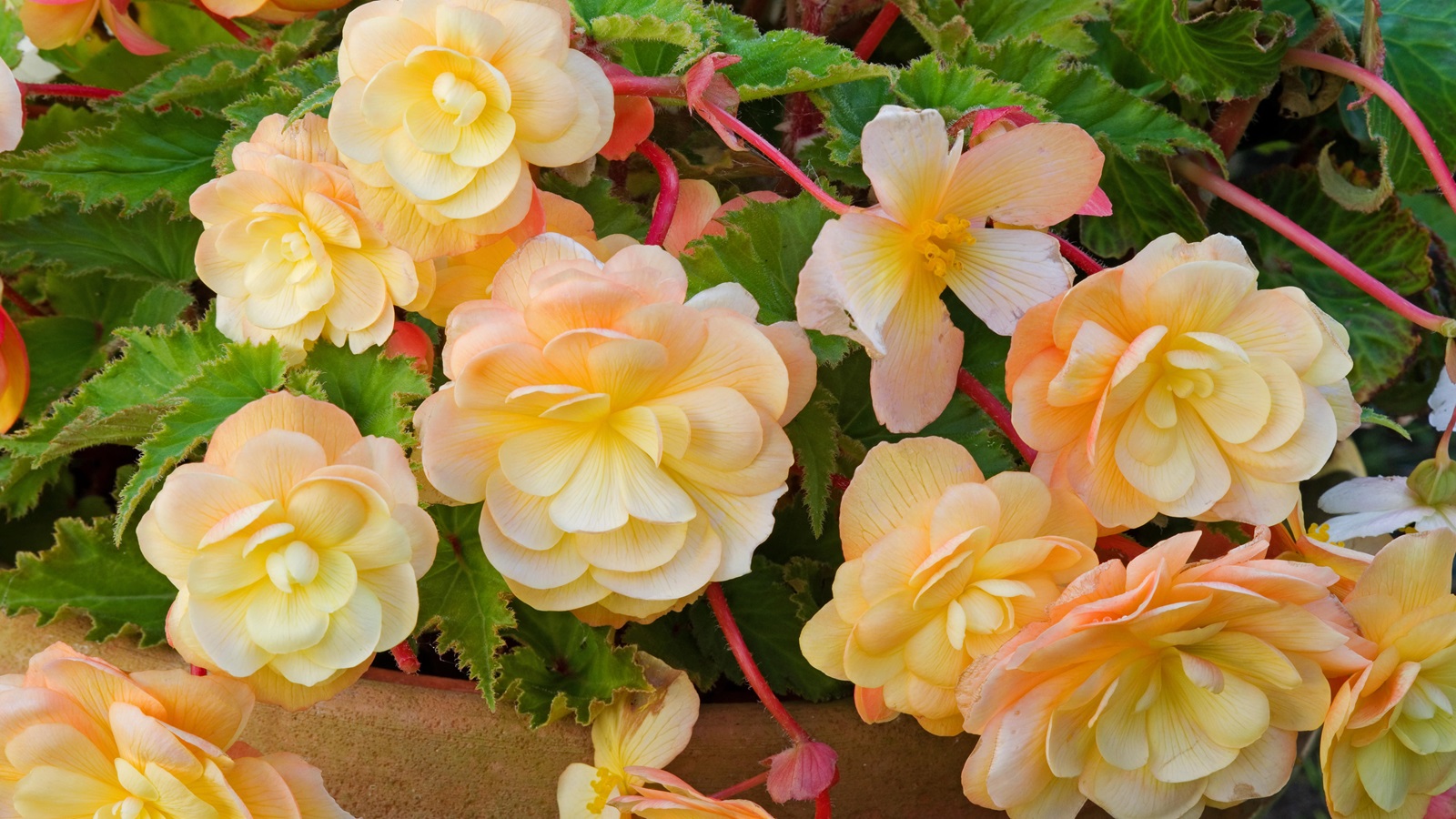

If you love your yard’s seasonal show of flower bulbs and wish for a repeat next year, it’s well worth knowing how to overwinter tender bulbs.
This is the process of lifting and storing those flower bulbs that are unable to survive the winter temperatures in your locality, ready to replant them outside when warmer conditions return.
A simple fall gardening task, it takes little time and effort to do and can save you money and heartache long term. We’ve spoken to bulb experts and horticulturalists to find out how they go about it and which types of bulb it is essential for.
Why overwinter tender bulbs?
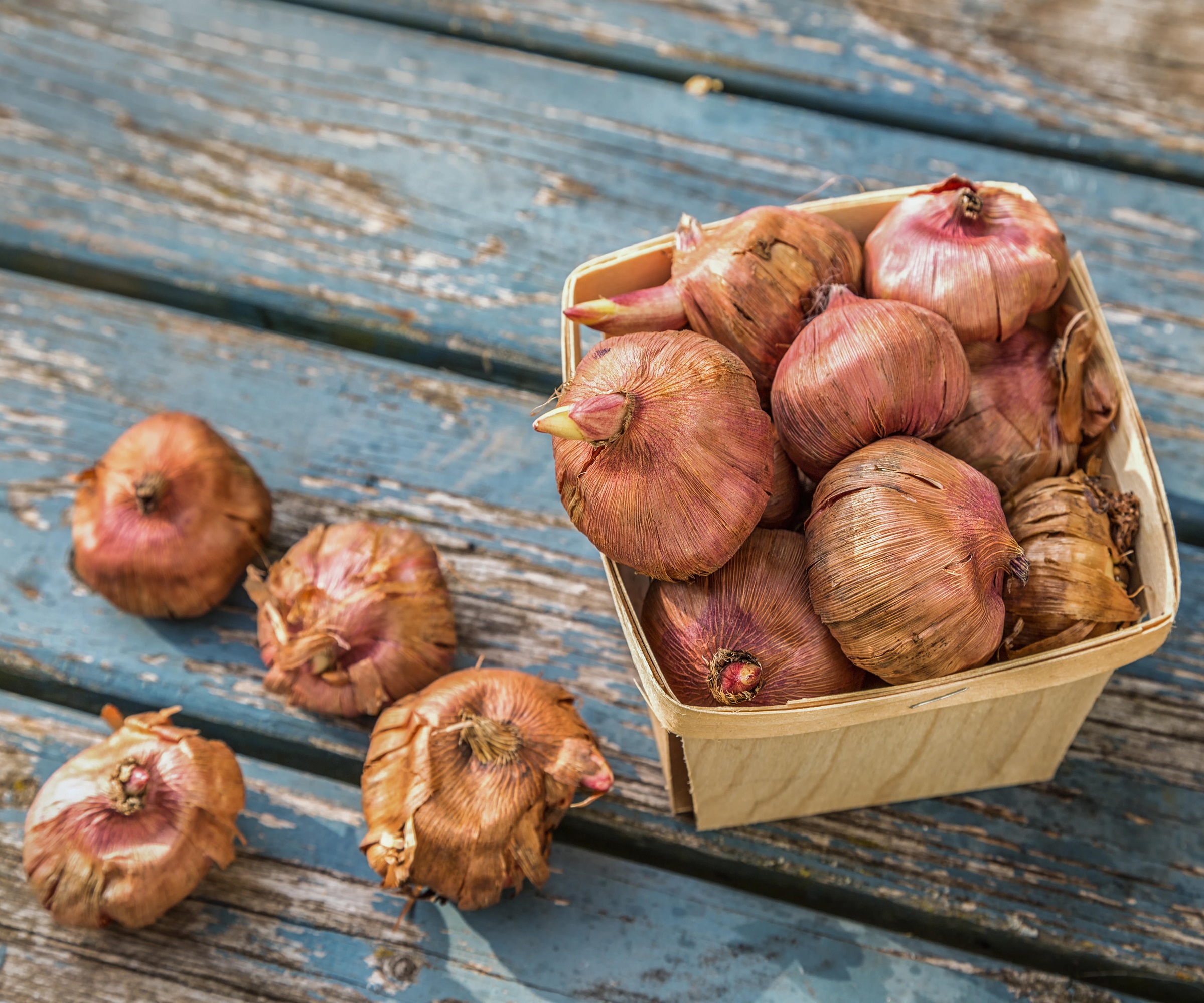
There are four different forms of ‘bulb’: corms, true bulbs, tubers and rhizomes. Essentially, they are all underground food storage units. Harvesting energy from their leaves during their active growth period, which is then stored once the foliage and flowers fade, ready to be used once again when conditions are right.
While many bulbs are undeterred by cold climates, some species such as dahlias and cannas originate from hot and tropical climes, and so are likely to perish if the soil dips below certain temperatures. On top of that, all bulbs detest spending long periods in waterlogged conditions as the basal plate (that produces roots) and layered scales (where the energy is stored), are susceptible to fungal infection and rot. If mold sets in very little can be done to save the plant, and the bulb must be discarded.
Lifting tender bulbs out of the earth and storing them somewhere cool and dry over the winter is recommended by many cool climate gardeners and horticultural experts.
Which bulbs are tender and need overwintering?
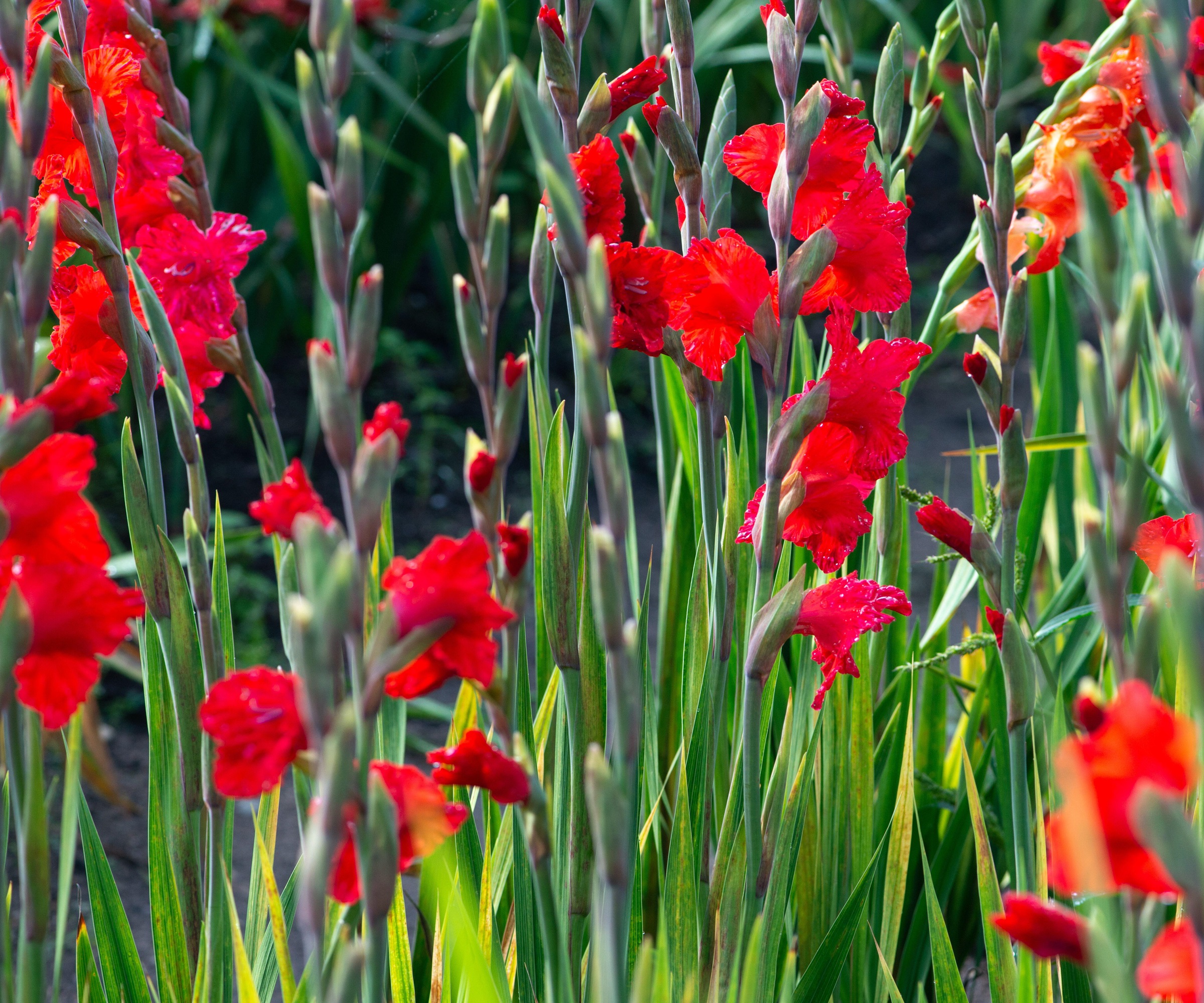
There’s no hard and fast rule as to which bulbs are tender, but there are a few likely contenders.
‘Which bulbs are tender depends on what zone you live in,’ explains horticulturalist Peggy Anne Montgomery. ‘In general, tender bulbs refer to plants that are only hardy in warmer climates of zones 8-10. If you have the proper conditions, time, and space to dig them up, they can be overwintered indoors, giving you larger bulbs for the next season's planning. If you don't, it's ok. You don't need to live without these beautiful blooms; you can plant them as annuals.’
Many summer-blooming favorites are considered tender. 'These include the ever popular and showstopping dahlias, gladiolus, begonias, canna lilies, caladiums, elephant ears, and calla lilies,’ says master gardener Tabar Gifford.
'These bulbs are planted in spring and typically grow to their full size and produce blooms in one season. Some are prized for their foliage, like elephant ears and caladiums (bonus points for canna which boast both striking foliage and colorful blooms too), while others are loved for their vibrant long blooming cheerful flowers.'
When is the best time to lift tender bulbs?
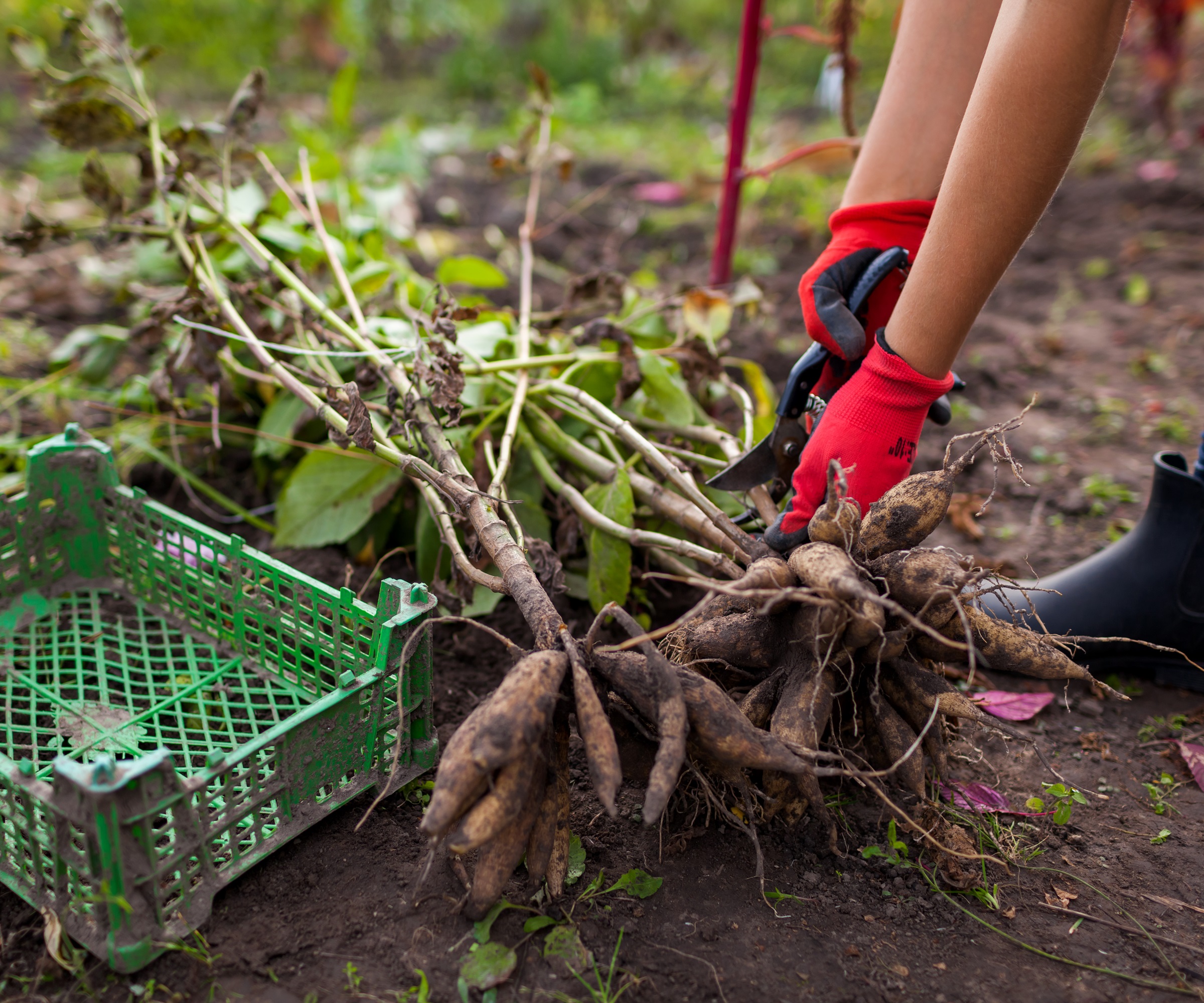
Knowing when to lift tender bulbs is key if you want them to survive the winter. 'Since tender bulbs are very sensitive to colder temperatures, it’s really important to dig up the bulbs before the ground is frozen,' says plant expert Katie Sunderlage.
'Generally, a light frost will not harm the bulb that is protected by the soil, but it can damage any foliage or blooms that remain from the season.'
Wait until the foliage has died back naturally or at the first sign of freezing weather conditions. ‘If your bulbs are still plump and not mushy or rotten, you can prepare them to be stored for the winter,’ advises Tabar. ‘You want to cut back the foliage to a few inches above the ground, then gently lift them out of the soil.’
How to prepare tender bulbs ready for storage
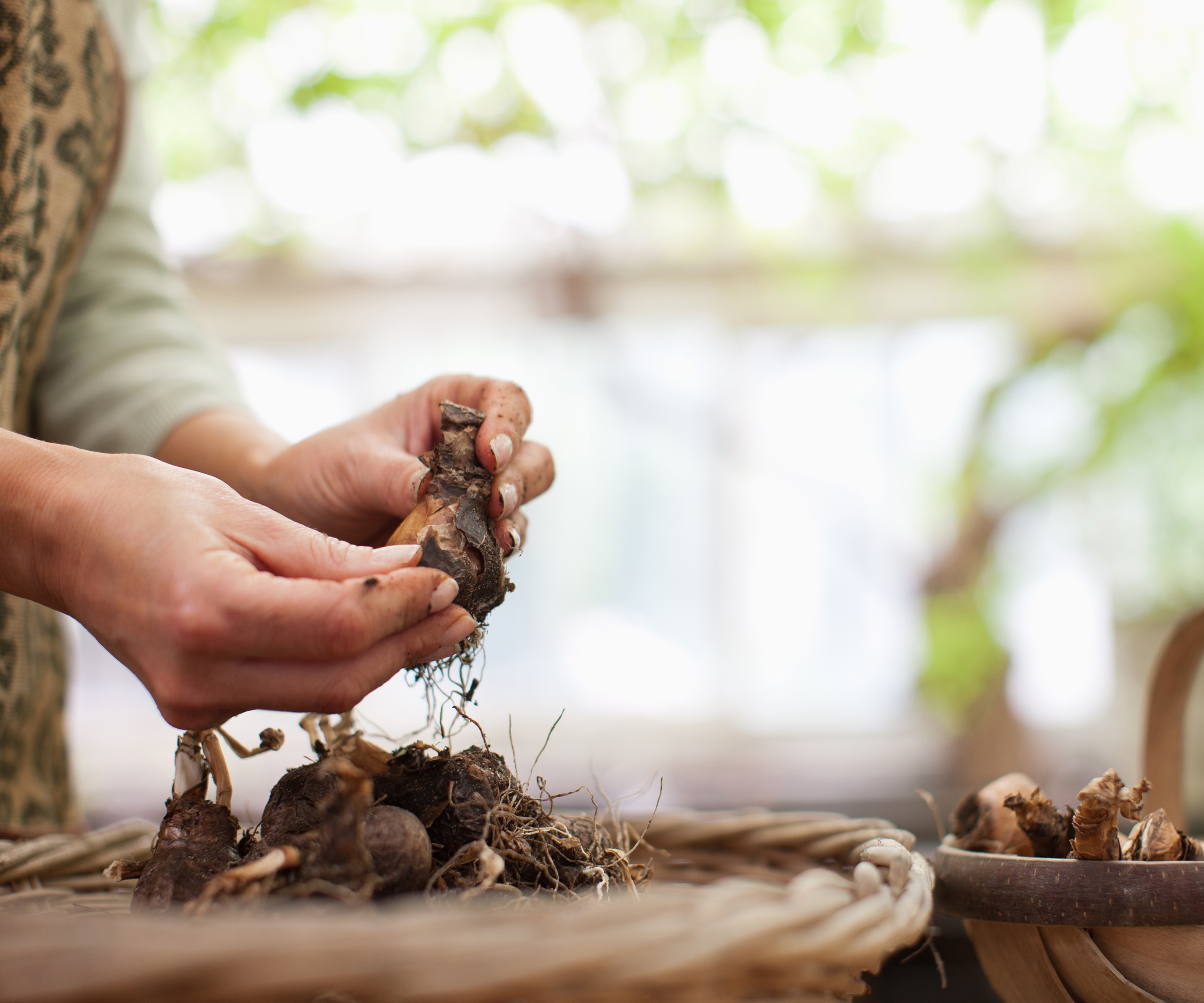
A tried and tested technique, Peggy Anne suggest: ‘Wash or brush all the soil off the bulbs and tubers and let them cure in a dark, warm, well-ventilated place for about a week. Glads and calla lilies can cure for up to three weeks.’ She also adds, ‘I find canna lilies the easiest to overwinter. After the first light frost, I dig them, brush off the soil; a little bit left on the tuber is ok, and let them cure for just two days.’
If dry, sunny weather is forecast you may want to leave bulbs lifted and to dry in the sun, as Katie Sunderlage suggests. 'Prepare a location outdoors to allow the bulbs to dry in the sun for a couple of days. It’s important to choose a few days in a row with no chance of precipitation to make sure they dry thoroughly. Any moisture can cause the bulbs to rot during storage.'
The best way to store tender bulbs over winter
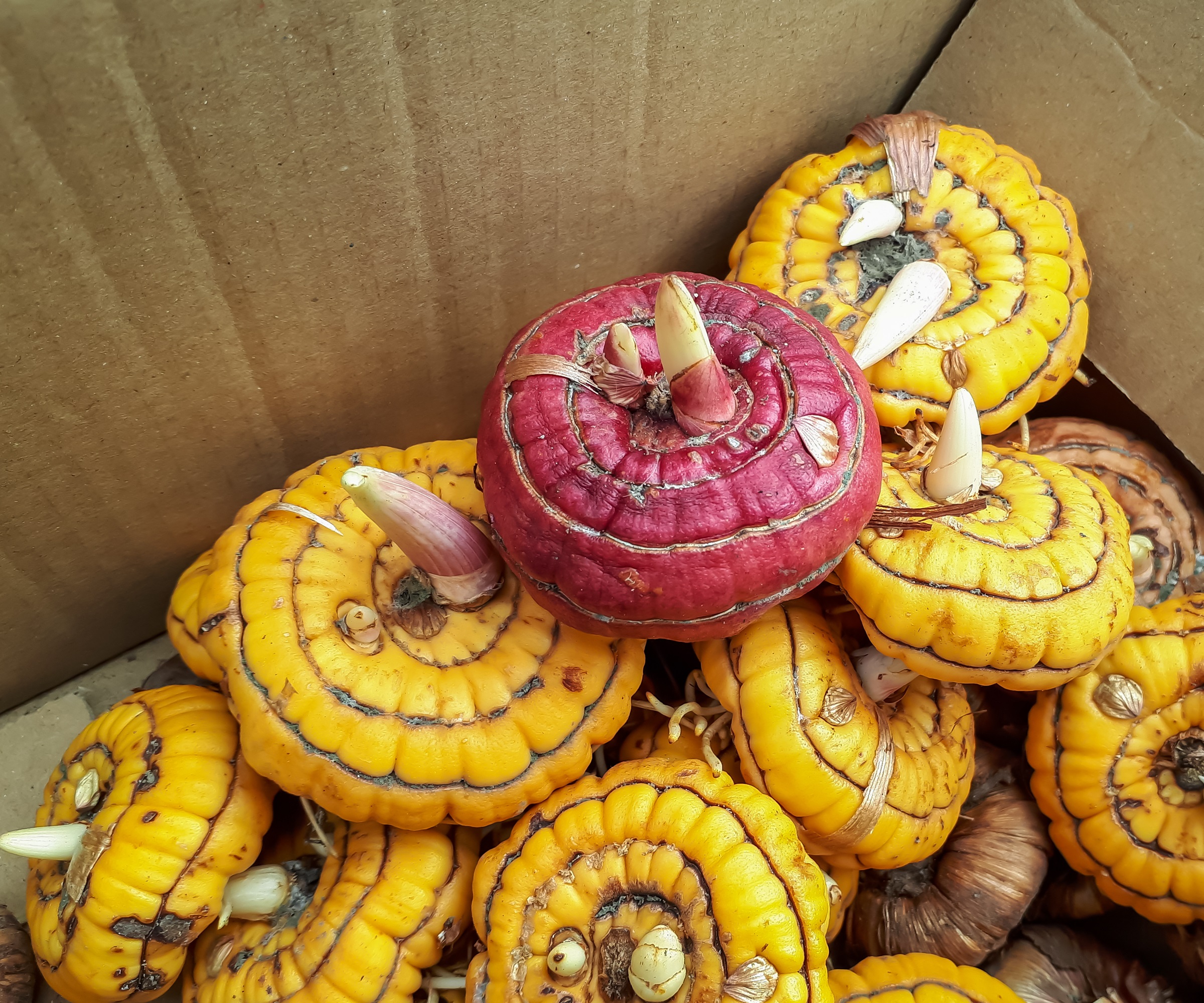
Good ventilation is a crucial factor for storing flower bulbs. ‘Pack them up in a breathable container then store in a cool and dry location. Often packing with wood shavings, or peat moss helps to regulate moisture, so your bulbs don’t rot in storage or completely dry out,’ says Peggy Anne.
The idea is to keep the bulbs in a dormant state until warmer and light days return which will prompt them to regrow. Providing the right conditions is all important and Katie advises to, ‘Store in a low humidity, dark location where temperatures will not freeze but also will not exceed 60F.’
Once you’ve safely packed up the dormant bulbs it’s a good idea to check on them once in a while. ‘Many people use crates or boxes with some ventilation holes,’ says Tabar. ‘I would also add to be cautious about critters seeking winter nesting spots.
'I stored my dahlias in the garage one year after carefully digging, cleaning, drying and packing them away in a mixture of wood shavings and shredded newspaper. I was surprised to find that the winter storage I created soon became a nesting place for field mice. My dahlias did not make it that year,’ adds Tabar.
Try Amazon's selection of collapsible storage crates or for smaller quantities opt for their hanging mesh storage bags.

Peggy Anne Montgomery is a horticultural professional with more than 30 years of US and international experience in garden marketing and communications. An account executive for the Garden Media Group, she currently represents Dutch Royal Anthos, a trade organization for Dutch bulb growers and exporters in the US and Canada.

As the Customer Experience and Partnership Cultivator at American Meadows, Tabar Gifford, is a Master Gardener and dedicated 'plant geek'. With a lifelong love for gardening and nature, and a background in environmental studies and sustainable community development, she combines horticultural expertise with a commitment to education. Striving to empower individuals in achieving their gardening aspirations, Tabar embodies a genuine passion for sharing her knowledge.
FAQs
Do you need to overwinter tender bulbs planted in pots outside?
If you’ve grown your tender bulbs in containers, you can follow the same practices for overwintering your bulbs planted directly in the ground. Cut back the foliage, gently lift out of the soil, clean and dry, then carefully pack up for winter storage. ‘However, many gardeners also experience success with simply moving the containers into a cool but dry location for storage,’ says master gardener Tabar Gifford. ‘A garage, basement or garden shed can serve as safe place with enough protection from the elements to overwinter your tender bulbs in their containers.’
There is a note of caution though, ‘It’s still important to be sure they are not too wet, and are in healthy viable condition,’ says Tabar. ‘Another method used is to wrap your containers in frost blankets, or pack with leaves to provide additional insulation for their winter naps. It’s important to keep in mind that containers will freeze first before the ground does, so if you’ve got tender bulbs in containers and in the ground, prioritize tending to the containers first when frost threatens.’
Are oriental lilies considered tender?
As flamboyant and highly perfumed bulbs, oriental lilies are hugely popular in borders and containers. Acid loving bulbs they thrive in sunny spots but are not as delicate as their blooms may suggest. 'The general rule of spring planted bulbs being tender has an exception: lilies. Oriental lilies are not tender and are just as happy being planted in the fall as they are in the spring,' says master gardener Tabar Gifford. 'For this reason, they are not a tender bulb, and will overwinter in cold locations happily. Most oriental lilies are cold hardy in zones 3-9.'
Inspired to continue adding to your display of flower bulbs then discover how to transform a dull, shady spot with the best bulbs for shade and our favourite high impact varieties for a spectacular show next season.
Sign up to the Homes & Gardens newsletter
Design expertise in your inbox – from inspiring decorating ideas and beautiful celebrity homes to practical gardening advice and shopping round-ups.

Journalist Jill Morgan has spent over 20 years writing and editing gardening, interior and property features. Titles she has worked on include The English Home, House Beautiful, Ideal Home, Houzz and Modern Gardens and she writes regularly for H&G as a Contributing Editor. Whilst she is a dab hand at renovation projects and DIY, she is happiest when out digging in the garden or planning a new border.
-
 Orange and green is the bold color pairing quietly transforming homes in 2025 – here's 4 reasons why
Orange and green is the bold color pairing quietly transforming homes in 2025 – here's 4 reasons whyInterior designers are making the orange and green combination work wonders – this is how you can too
By Sophia Pouget de St Victor Published
-
 This Michelle-Pfeiffer-approved chair is made of a forebodingly unusual material, opening the debate: Is it a rustic stunner, or a danger to sitters?
This Michelle-Pfeiffer-approved chair is made of a forebodingly unusual material, opening the debate: Is it a rustic stunner, or a danger to sitters?The actress took to Instagram with a chair made of a controversially sharp material – and fans are unsure of how they feel about it
By Sophie Edwards Published